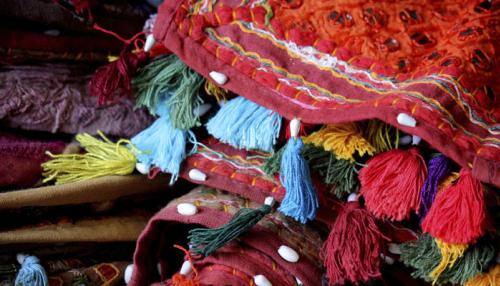- News>
- And More ...
Good quality textiles a rarity in Indian markets, says Madhu Jain

Craft revivalist and textile conservationist Madhu Jain, known for promoting indigenous forms of textile weaving and design in her almost 30 year-long career, says it`s difficult to find good quality textiles in the Indian market nowadays. She also feels that unlike in the West, there is no quality control in India and this results into many problems.
New Delhi: Craft revivalist and textile conservationist Madhu Jain, known for promoting indigenous forms of textile weaving and design in her almost 30 year-long career, says it's difficult to find good quality textiles in the Indian market nowadays. She also feels that unlike in the West, there is no quality control in India and this results into many problems.
"Nowadays good quality textiles are becoming a rarity in Indian markets. Weavers and craftspeople are increasingly tech-savvy and know exactly what the current market influences are. A weaver can click on any website to see how much a kurti woven by him is selling for in the open market. And naturally, they want a piece of that pie as well," Jain told IANS in an interaction here.
She explained how, if weavers don't get the rates, they know they should command, the result is a drop in quality.
"Weavers don't want to spend hours over their looms producing fine products when they can get away with quicker weaves. And designers pick up whatever is available in the market. That's mass marketing."
"People like me who go to the weavers and work closely with them, fall into the niche marketing space where our textiles are of high quality and demand a certain discernment that those who know their textiles will appreciate," Jain said and added that "unlike in the west, there is no quality control in India".
She stressed on the need to enforce strict quality control in every aspect of production -- from the quality of textiles to the finish of the garment.
"By this I'm including even the basic lining," she said.
Jain's forte lies in developing textiles in distinctive combinations of two different weaving traditions to create new textiles, high on quality and design. She is proud that she has never comprised on fabric.
"Most designers pick up ready, off-the-shelf fabrics. I never do that. At the risk of sounding arrogant, I'd stick my neck out to say that you'll never find textiles like mine anywhere. That's because as a craft revivalist and textile conservationist, my passion lies in design interventions."
"I go to the grassroots and work directly with the weavers to produce new weaves and motifs," she said.
Jain feels that most designers are in fact "working as much with handlooms" as she hoped they will -- the irony being that the west loves Indian textiles.
"Only a handful of designers work exclusively with organic handlooms," she said.
"The west is increasingly attracted by the richness and sheer range of Indian weaves, and many of the biggest international design houses and designers have used Indian textiles to their advantage. Some of the famous names that come to mind are Ralph Lauren, Oscar de la Renta, Yves St Laurent, Calvin Klein, Giorgio Armani," added Jain.
Her own latest Autumn 2016 collection offers saris in an Indo-Thai fusion of weaves and motifs.
"These one-of-a-kind, limited edition saris were inspired by my natural proclivity towards creating fresh weaves as I never buy textiles that are already available in the market."
Jain said, "This collection showcases the meticulousness with which I have successfully combined two different weaving styles into a single, organic entity, achieving a harmonious confluence of cultures."
"The main body of the saris use the Thai weft style of Mudmee or Matmi, preferred by Thai nobility, while the pallus were inspired by the classic Pietra Dura inlay work found in the Taj Mahal. I'm proud to say that my bold experiment has paid off and I'm deeply satisfied by the result," she said.
